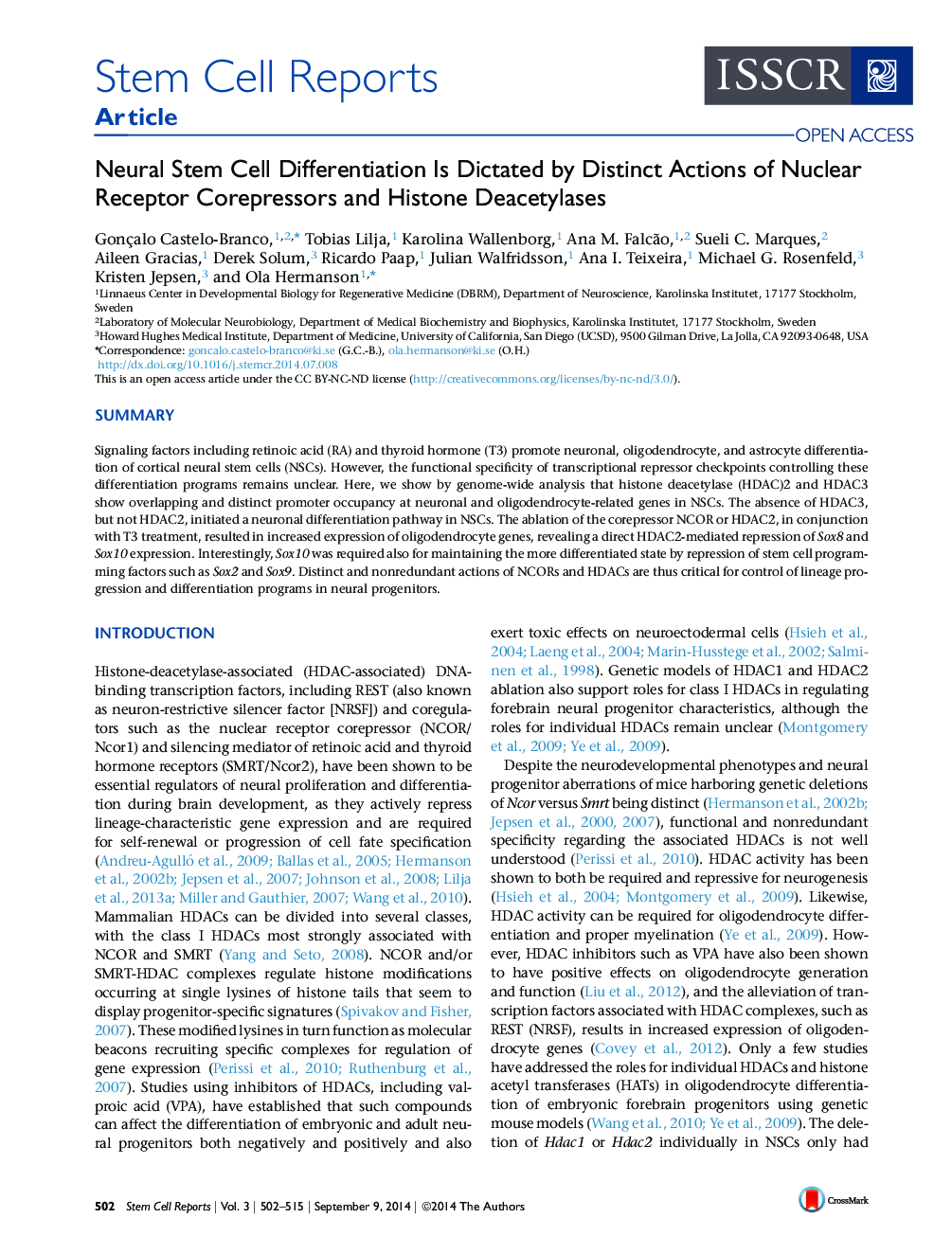| Article ID | Journal | Published Year | Pages | File Type |
|---|---|---|---|---|
| 2093351 | Stem Cell Reports | 2014 | 14 Pages |
•ChIP-seq reveals distinct and overlapping occupancy of HDAC2 and HDAC3 in NSCs•Absence of NCOR promotes oligodendrocyte differentiation of NSCs•HDAC2 controls Sox10 expression in OL differentiation via a SOX2-occupied enhancer•Sox10 is required for maintaining the differentiated state in late OL precursors
SummarySignaling factors including retinoic acid (RA) and thyroid hormone (T3) promote neuronal, oligodendrocyte, and astrocyte differentiation of cortical neural stem cells (NSCs). However, the functional specificity of transcriptional repressor checkpoints controlling these differentiation programs remains unclear. Here, we show by genome-wide analysis that histone deacetylase (HDAC)2 and HDAC3 show overlapping and distinct promoter occupancy at neuronal and oligodendrocyte-related genes in NSCs. The absence of HDAC3, but not HDAC2, initiated a neuronal differentiation pathway in NSCs. The ablation of the corepressor NCOR or HDAC2, in conjunction with T3 treatment, resulted in increased expression of oligodendrocyte genes, revealing a direct HDAC2-mediated repression of Sox8 and Sox10 expression. Interestingly, Sox10 was required also for maintaining the more differentiated state by repression of stem cell programming factors such as Sox2 and Sox9. Distinct and nonredundant actions of NCORs and HDACs are thus critical for control of lineage progression and differentiation programs in neural progenitors.
Graphical AbstractFigure optionsDownload full-size imageDownload as PowerPoint slide
